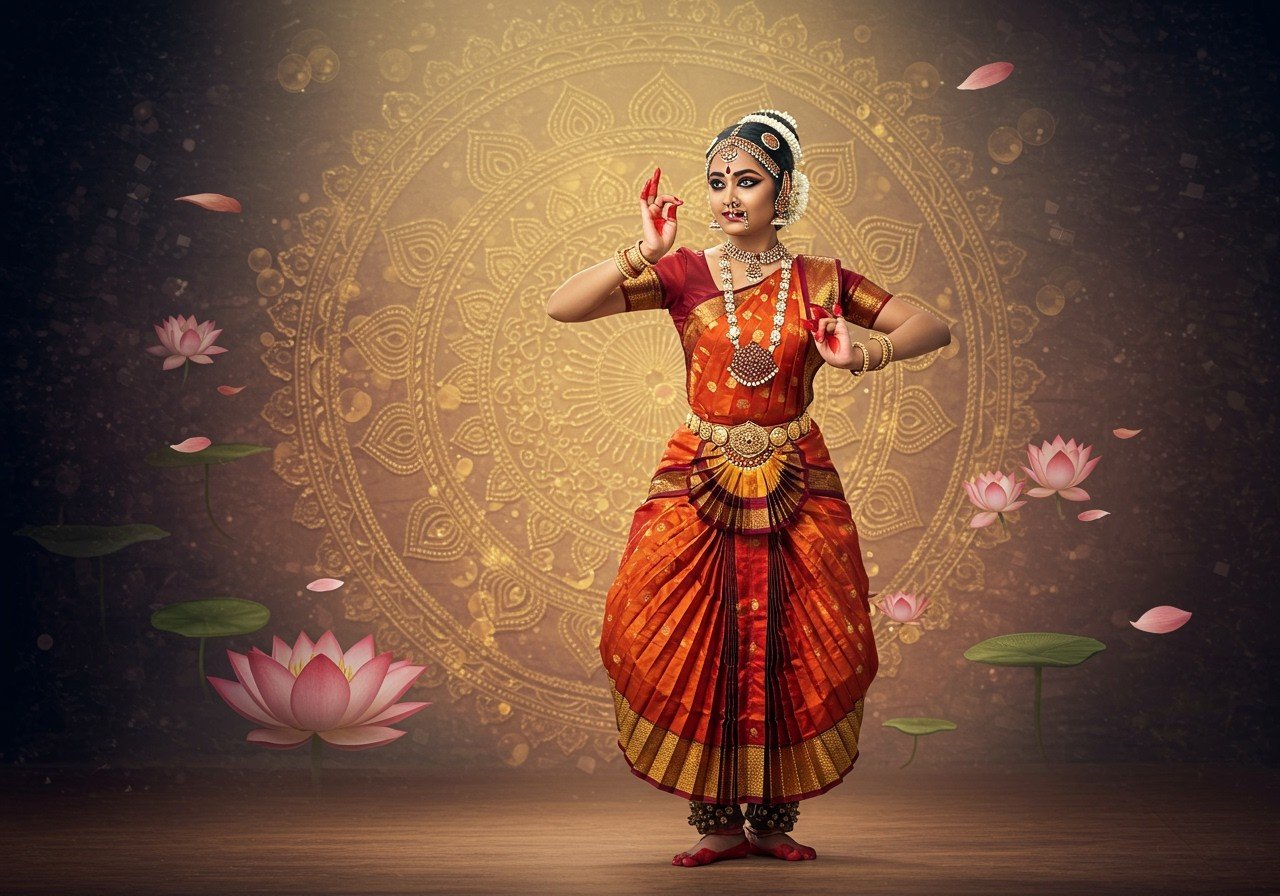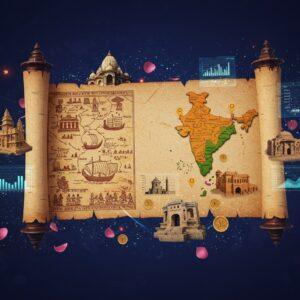
Embark on a journey into the captivating realm of Indian Classical Dance, a mesmerizing expression of culture and tradition. Costumes and accessories play a pivotal role, transcending mere adornment to become integral to the storytelling. Delve into the distinctive styles of Bharatanatyam, Kathak, Odissi, and more, each adorned with unique costume elements. Experience the reverence for authenticity and tradition cherished by audiences who witness these cultural performances.
The Significance of Costumes in Indian Classical Dance
Costumes in Indian Classical Dance are imbued with symbolic meanings, often reflecting cultural and spiritual narratives. Each dance form boasts its unique attire, from the elegant sarees of Bharatanatyam to the flowing lehengas of Kathak. These costumes are meticulously crafted to facilitate fluid movements, essential to each style. Traditional materials and colors amplify the visual impact, strengthening the connection between dancer and audience, enriching the storytelling.
Key Costume Elements Across Dance Forms
Each dance style is characterized by specific costume elements.
- Bharatanatyam showcases traditional silk sarees, pleated fans, and temple jewelry, creating a regal and elegant aesthetic. The pleats in the saree are designed to open like a fan during specific movements, adding to the visual drama.
- Kathak dancers wear lehenga or anarkali-style dresses adorned with intricate embroidery, reflecting the fluidity and grace of the dance form. The length and flare of the skirt allow for the dancer’s intricate footwork and spins to be fully appreciated.
- Odissi performers wear silver filigree jewelry and uniquely draped sarees, highlighting the lyrical and flowing movements of this style. The saree draping allows for greater flexibility and movement, essential for the graceful postures and fluid movements of Odissi.
These costumes not only accentuate the footwork crucial to these styles but also reflect regional designs, showcasing the rich diversity of Indian Classical Dance.
The Allure of Indian Classical Dance Jewelry
Jewelry elevates the beauty and expressiveness of Indian Classical Dance.
- Traditional pieces include headpieces (maang tikka), earrings (jhumkas), necklaces (mala), and bangles. These ornaments often carry divine or mythological significance, adding a layer of symbolism to the performance. The craftsmanship and intricate designs of these pieces are often a testament to the rich artistic heritage of the region.
- The weight and design of the jewelry complement the dancer’s movements, creating a harmonious visual and auditory experience. The rhythmic jingle of the jewelry adds another dimension to the performance, accentuating the dancer’s movements.
Skilled artisans handcraft traditional dance jewelry, reflecting intricate craftsmanship and cultural heritage.
Accessories in Indian Classical Dance
Beyond jewelry, accessories like ghungroo (ankle bells) are essential for rhythm and footwork accentuation.
- Ghungroo, worn around the ankles, produce a rhythmic sound that emphasizes the dancer’s footwork and adds a dynamic element to the performance. The precise placement and number of bells are crucial for creating the desired sound.
- Headgear and hair adornments such as flowers contribute to the aesthetic appeal. These embellishments enhance the dancer’s overall appearance and contribute to the visual narrative of the performance. Flowers, in particular, often symbolize purity and beauty, adding a touch of elegance to the dancer’s attire.
- Stage props, like fans or veils, sometimes enhance performances, adding a dramatic flair and storytelling element. These props can be used to symbolize different emotions, characters, or elements of nature, enhancing the narrative of the dance.
Makeup plays a crucial role, highlighting facial expressions vital for conveying emotions in dance.
Modern Adaptations and Innovations in Indian Classical Dance Costumes
Contemporary dancers often adapt traditional costumes for modern performances.
- Balancing authenticity with new materials or designs ensures comfort and practicality without compromising the traditional aesthetic. This allows dancers to move freely and express themselves fully while honoring the traditional aspects of the costume. New fabrics and designs can enhance comfort and durability, making the costumes more suitable for rigorous performances.
- Global fashion trends influence Indian Classical Dance costumes while respecting cultural heritage, introducing fresh perspectives while preserving tradition. This fusion of tradition and modernity can create stunning visual effects and add a contemporary touch to the costumes. Designers often experiment with new color palettes, embellishments, and draping styles, keeping the costumes relevant to modern audiences.
Online platforms make authentic costumes accessible to a global audience, fostering appreciation and participation in Indian Classical Dance worldwide. Poojn.in offers a selection of sarees suitable for dance practice or performances.
Indian Classical Dance: A Cultural Jewel
Indian Classical Dance costumes are more than mere attire; they are the embodiment of the dance itself, accentuating every move and expression. Designed to shimmer and shine, they give each dance form its unique identity.
Classical Dance Forms: A Rich Tapestry of Tradition
India boasts a diverse array of classical dance forms, each a testament to its rich cultural heritage.
- Prominent styles include Bharatanatyam, Kathak, Kuchipudi, Mohiniyattam, Odissi, Kathakali, Manipuri, and Sattriya. Each style weaves a unique narrative of culture and tradition through its distinctive movements and attire. These dance forms have evolved over centuries, reflecting the diverse regional cultures and artistic traditions of India.
- Each dance form carries its own distinct history and symbolism, often drawing inspiration from mythology, religion, and folklore. The costumes and movements are intricately linked to these narratives, creating a rich and layered performance experience.
Evolution of Costumes: A Journey Through Time
While the saree was the original costume for many of these dances, it has undergone a fascinating evolution.
- Over time, costumes have adapted to the unique demands of each dance form, incorporating specific designs and features to enhance performance while staying true to cultural roots. This evolution reflects the changing social and artistic landscape of India, while still honoring the traditions of the past.
- Innovations in textile technology and design have played a role in shaping the evolution of these costumes, making them more comfortable, durable, and visually striking.
Costume Components: A Symphony of Fabrics and Designs
A typical dance costume comprises various elements, each serving a specific purpose.
- Components may include a bottom piece, blouse, hip cloth, and anchal, varying by dance style to ensure the dancer’s comfort and freedom of movement. The choice of fabric, color, and embellishments contributes to the overall aesthetic and symbolic meaning of the costume. The draping and fit of each component are carefully considered to enhance the dancer’s movements and expressions.
- The colors and materials used in the costumes hold symbolic meaning and often reflect regional traditions. Bright and vibrant colors are common, symbolizing joy, energy, and devotion.
Jewelry & Accessories: Adornments of Grace and Tradition
Jewelry is an indispensable part of the Indian Classical Dance costume.
- It includes necklaces, earrings (jhumkas), nose rings, bangles, and hair adornments, each piece adding to the overall elegance and symbolism of the attire. Temple jewelry, often made of silk and gold, adds a touch of divine elegance, connecting the dancer to spiritual themes.
- Accessories like ghungroo (ankle bells) are essential for rhythm, their delicate chimes accentuating the dancer’s footwork, while makeup enhances facial expressions, conveying a range of emotions.
Where to Buy: Sourcing Authentic Attire
Finding authentic costumes and jewelry is now easier than ever.
- Specialized stores and online platforms offer a wide selection. Natyamcostumes and ITSMYCOSTUME (available on Amazon.in) are reputable options, providing both ready-made and custom-stitched attire. This accessibility allows dancers worldwide to connect with Indian classical dance traditions easily.
- Many retailers offer custom stitching services, allowing dancers to personalize their costumes to perfectly complement their dance style and body type. This bespoke approach ensures a perfect fit and allows for unique artistic expression.
How Poojn.in Enhances Your Classical Dance Experience
Poojn.in offers essential items for classical Indian dance performances and practice.
- Pure cotton dhotis, ideal for male dancers in Bharatanatyam, Kathakali, or other styles, ensure comfort during long sessions. The high-quality cotton ensures breathability and ease of movement.
- Traditional gamchas (cotton towels) are useful for dancers during practice sessions. These absorbent towels help keep dancers cool and dry during strenuous rehearsals.
All items are easily ordered online with secure payment and delivery across India. Poojn.in’s consistent stock makes sourcing authentic materials convenient for practitioners and institutions.
Embracing Tradition with Grace
Indian Classical Dance costumes and accessories are more than just clothing; they are the embodiment of tradition and artistry. They capture the spirit of each dance, enhancing every graceful move and expressive gesture. By embracing these costumes, we honor the rich cultural heritage they represent.
Whether you are a dancer or an admirer, understanding the significance of these costumes deepens your appreciation of this timeless art form. With convenient online access to traditional and modern designs, these cultural jewels are readily available, inviting everyone to experience the beauty and elegance of Indian Classical Dance.


